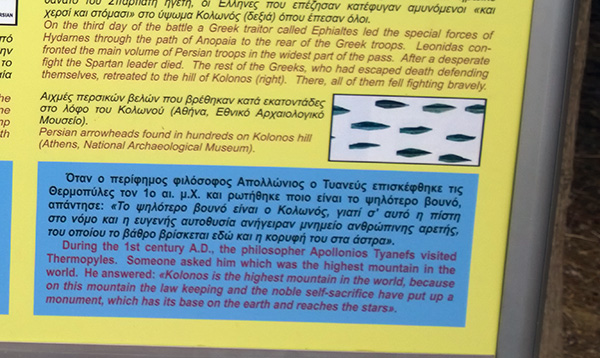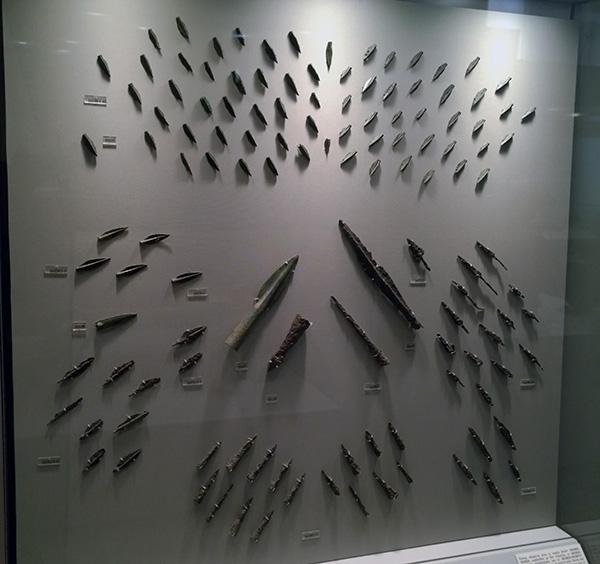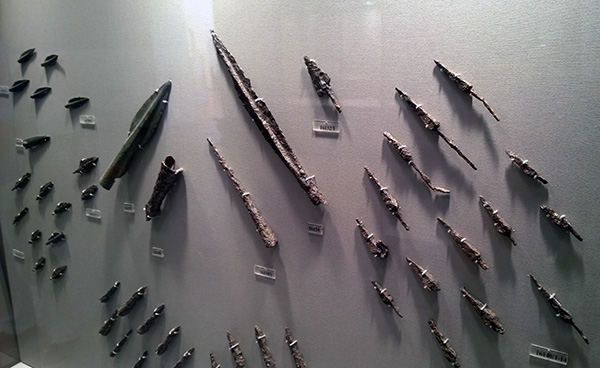Those visiting the site of the Battle of Thermopylae (480 BC) will be disappointed to learn that the battlefield has changed dramatically after 2,500 years. This was not due to development, but instead nature—earthquakes, deposits from the nearby hot springs, sediment deposition, and changes in the sea level. The result is the shoreline is now 2.5 miles away instead of acting as a natural barrier, as described by Herodotus. In addition, the ground is roughly 65 ft higher. ((See George Rapp, “The Topography of the Pass at Thermopylae Circa 480 BC,” in Beyond the Gates of Fire: New Perspectives on the Battle of Thermopylae, eds. Christopher Matthew and Matthew Trundle (Barnsley: Pen & Sword, 2013).))
[huge_it_maps id=”14″]
Yes, when you’re on the warpath of Leonidas and Xerxes at Thermopylae, you are standing well above the original ground.
If the notion that the earth has swallowed up the battlefield leads you to question our certainty on its location, then archaeological finds can ease your mind. We have found roughly 100 bronze and iron arrowheads and a few spearheads. ((Amelia R. Brown, “Remembering Thermopylae and the Persian Wars in Antiquity,” in Beyond the Gates of Fire: New Perspectives on the Battle of Thermopylae, eds. Christopher Matthew and Matthew Trundle (Barnsley: Pen & Sword, 2013).)) These were discovered in 1939 by Spyridon Marinatos who was able to convince the historical community that Kolonos Hill is indeed the last stand of the Spartans and their Thespian allies at Thermopylae, as opposed to a smaller hill further to the north. ((Michael A. Flower, “Ephorus, and Herodotus on the Battle of Thermopylae,” The Classical Quarterly 48, no. 2 (1998): 377.))
Visitors of the Thermopylae battlefield today will find an information marker with a photo of these weapons.

If you want to see the discovered weapons, you need to head to the National Archeological Museum in Athens. We are not entirely sure if all of these weapons are Persian, Greek, or a mixture of the two, but historians tend to believe they are all Persian. More importantly, they all date to the right period in terms of style.

These also include some spearheads that we again assume are Persian.

If you have the privilege of visiting Athens, you can see the weapons that may have killed Leonidas and the Greeks at Thermopylae.
